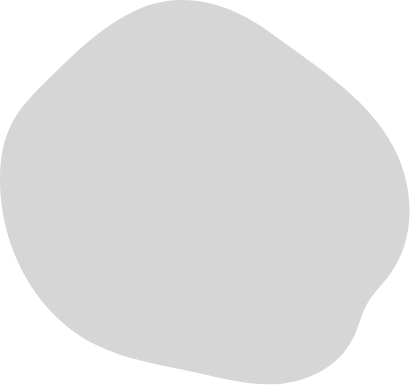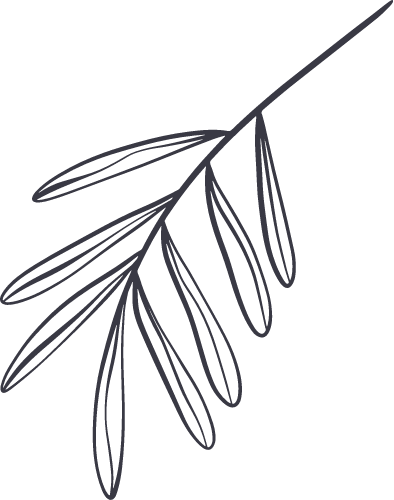I have spoken frequently about using fences to serve the cause of biodiversity. This video is to show you how, with a couple of examples. To help us, Dr Mathew Dan will introduce a couple of climbers you can train on your fences. But before going into that part, I have something to tell you. Most people are still not convinced that fences are very effective means of securing their compounds. They feel safe and secure only with a proper wall around their property. Let’s ignore the aspect of biodiversity for the moment, and focus on two other points.
The first is that a wall is no security against intruders. Even strong rooms inside banks and concrete chambers have been broken into, and their contents looted! While I was a school boy, jumping over the compound wall was child’s play. Imagine how easy it would be for trained thieves to scale walls! The other day I read an interesting news report about a man who was hospitalized after getting injured in an attack. Some time later his wife confessed that during their fight when she had threatened to retaliate, he fled. As he ran he got tangled in the thorny fence around their property, and his skin was bruised. Obviously, a thorny fence is more effective than a compound wall because it will at least inflict a few wounds! Causing injuries is not our aim but this example will hopefully prove that thorny fences give better protection.
The second point is that the most number of civil cases fought in courts in Kerala revolve around property disputes. Most people are reluctant to give up even a small sliver of their land to their neighbours or for the sake of constructing or widening a road. Even when they can afford to cede a bit of land, they are unwilling to do it. In truth, such disputes can be easily negotiated and settled. Let me show you a practical way to solve such problems.
Right below me is a piece of property – nearly 120 feet in length – that I gave up for the sake of a road. The only condition I lay down was that I should be permitted to put up fences on both sides – 120 feet on one side and 90 feet on the other. I erected a five-foot wire-net fence along the total length of 210 feet, and it gave me 1050 sq. ft. (or two-and-a-half cents) of vertical space. Vertical gardens, as you know, are the in-thing now. In other words, I got vertical space in return for the land I gave up. If I do farming in that area, it will give me more profit than that bit of ground and, additionally, I can use the road. Besides, the road will improve the value of my property. On one fence, I have trained a few medicinal creepers and on the other, a few vegetable plants. Together, they may not yield a harvest that we may expect from a plantation. But they will produce enough to sustain a small family, even without the use of chemical fertilizers or pesticides. We have planted nearly 40 species of medicinal plants and climbers, over and above vegetable plants.
Now let me invite Dr Mathew Dan to introduce the plants to you. He has appeared in one of our earlier episodes. He is a scientist with 30-35 years of experience at the Palode Botanical Garden.
Sir, although I have trained many creepers along the fence, I don’t know their botanical names. This is white-coloured Asian pigeon wings, isn’t it?
Yes, Asian pigeon wings comes in many varieties. The white one is said to have greater medicinal properties.
When there are white and blue flowers, as in the case of the crown flower too, Ayurvedic physicians say the white has better healing powers. What is its scientific name?
CLITORIA TERNATEA. This is asparagus, locally called “shataavari” because it has a hundred [shatam] roots [veru], each ending in a tuber. Its scientific name is ASPARAGUS RACEMOSUS.
Is this morning glory?
No, this is hondala. The two are easily confused unless you know the fine differences. Here you can see glandular structures. That is an identifying characteristic, seen only in hondala. You’ll also see thorny spikes called bracts on the stem below the leaves. Its flowers are light cream in colour, and do not open fully. This creeper spreads with the help of spring-like structures called tendrils. All these features are found only in hondala, not in morning glory. Morning glory belongs to a different family called CONVOLVULACAE. This is heart-leaved moonseed which is used extensively in Ayurvedic medicines. It increases the power of immunity of the human body, and is very sour to taste. It contains many chemical compounds. Its scientific name is TINOSPORA CORDIFOLIA. The word “cordifolia” means ‘heart-shaped leaves,’ and it comes in male and female varieties. This is locally known as “kaakka valli” or “vattakaakka valli” and its scientific name is WATTAKAKA VOLUBILIS. The leaves are almost round [vattam] in shape, and the scientific name is derived from it. Besides, they have a unique smell. They are used profusely in Ayurvedic concoctions. This is black creeper, locally called “Paal valli” because it is a creeper [valli] that yields milk [paal] or latex, when the stem is injured. Its scientific name is ICHNOCARPUS FRUTESCENS, and it bears close resemblance to Indian sarsaparilla. This is SMILAX ZEYLANICA. Its roots are used as medicine. The roots have many branches and are very tough. They are difficult to break.
I have heard references to it in Kadammanitta’s poetry. But I saw it for the first time only after coming here.
As it has thorns, most people destroy it. But it has medicinal properties, and is eminently suited for training on the biofence. Its flowers and fruits are beautiful. This is balloon vine, a famous medicinal plant and one member of “Dashapushpam” [ten sacred flowers of Kerala]. Its scientific name is CARDIOSPERMUM HALICACABUM. You can see a white heart-shaped mark on its black seed. That’s how the plant gets its name “cardiospermum”. This is Indian sarsaparilla whose roots are very fragrant, and hence used in making sherbets. It is famous for cooling the body. The roots are used to make pickles too. They are used to make Ayurvedic medicines also. Its scientific name is HEMIDESMUS INDICUS. This is velvet leaf whose scientific name is CISSAMPELOS PAREIRA. It belongs to the same family as Indian moonseed. Its leaves are used to treat bruises caused either by fall or by being hit or beaten, and also in post-partum treatment.
Does it have male and female varieties?
No. It produces a kind of red fruit. But the same plant has male and female parts. This is “Paada thaali” or Indian moonseed. If its leaves are crushed and mixed in water, it produces a thin skin [paada]. The viscous liquid is used as shampoo [thaali]. Hence the local name “Paada thaali”. It is said that its tuber is good to treat premature greying. Earlier, it was used as hair wash. This is Indian long pepper, or PIPER LONGUM, which usually spreads on the ground. It is one of the “Thrikadu” combination [three ingredients in Ayurvedic medicine, the others being ginger and black pepper]. Its flower spike is used to treat lung-related diseases, cough, throat pain and so on.
There used to be a lot of kariyat plants here earlier. Now, one has sprouted naturally in a pot. Is it a creeper?
No, it’s a plant. Its scientific name is ANDROGRAPHIS PANICULATA. This is azores jasmine.
I used to have it in my garden plot long back. It has black fruits that have a sweet smell. If its leaves are ground, and mixed with juice from crushed tender coconut husk, it cures itching. That is a variety of devil’s backbone with rounded stem. If you look closely or take a cross-section of it, you will be able to notice four sides to it. Usually devil’s backbone has four distinct sides. This one has only two. All these belong to the same species called CISSUS QUANDRANGULARIS. There is another variety with three sides. But it is not very commonly seen.
It is used to treat cancer, isn’t it?
We can’t claim that with any certainty. The Adivasis use it to treat tumors. This is red-stemmed wild grape vine. The underside of its leaves are copper-red in colour. Hence the local name “Thamra valli” [copper vine]. Up there, it has put out flowers which are really copper-red. Yes, it has a lot of flowers. It belongs to the grape family, and its scientific name is AMPELOCISSUS INDICA. The fruits look like clusters of grapes. At its base, sometimes you can see tubers that are as big as tapioca.
Are they so big?
Yes, there will be only one or two tubers though. This is bush grape. Its scientific name is CAYRATIA TRIFOLIA. This also belongs to the grape family. We have been able to grow up to 40 climbers here without much effort. They can be used for medicinal purposes.
On this side, we have vegetable plants, and we have been getting vegetables like ivy gourd, yard long bean, pumpkin, snake gourd – which we could not pluck in time, and so has gone dry. We picked two big pumpkins from here yesterday.
Usually pumpkins lie on the ground. But they were hanging from the fence. Can it bear the weight?
Yes, what you see there is the stump after the pumpkin was plucked. This is bitter gourd. This is native gooseberry. While at school, I used to eat its fruits. Recently I read that its seeds are soaked in honey and exported to the Gulf countries.
But that is another variety. This one is PHYSALIS MINIMA. The other variety is a bigger one and appears as fruits in the markets. This is Indian ipecac, a medicinal creeper, which is used primarily to cure asthma, particularly bronchial asthma. Its leaves have the power to melt phlegm inside the lungs, and give relief to asthmatics. The scientific name is TYLOPHORA INDICA. Earlier, when it was more known for curing asthma, it was called TYLOPHORA ASTHMATICA. There is another devil’s backbone. This is the typical member of the species whose four angles and four sides are clearly visible. The other two varieties were the round-stemmed one and the two-sided one. All of them belong to the species called CISSUS QUADRANGULARIS. Morning glory will look like this but has pink flowers, not violet.
All these flowering climbers were planted very recently. In three to four months, the whole area will be covered over by them. I have a special reason for showing you this. When we planted all the saplings together, it drew a lot of criticism. Many asked us, “Why don’t you plant them all in one pit?” “Are these going to bring out fruits?” “Will they get sunlight?” and so on. Here you can see all of them in bloom. After some time, fruits will appear This is evidence that when the plants are clumped together, they will certainly grow.
Is the scarlet bauhinia in bloom?
No, they are tender leaf shoots. They will bloom only after the plant matures. Most people are not familiar with it. That is because it is usually seen only in the deep forests.
Sir, pepper vine can also be trained on this fence.
But it will require attachments.
What about Indian leadwort then?
Indian leadwort is not a climber. So it can stand on its own.
Sir, since you’ve come here, let me show you this. In the forests we planted, we had conducted an experiment to grow vegetables. We decided to have one tree in one sq. m. and fill the rest of the space with vegetable plants. We planted them one-and-a-half years back. This is the Miyawaki forest that has registered the least growth. We had only one plant per one sq. m.
You did not go for thick crowding.
No. Later, when we planted more saplings, the growth rate increased slightly. Some people are doubtful whether four saplings in one sq. m. will yield good results. This forest is proof that if we have less than three plants per sq. m., there will not be the expected rate of growth. My two-cent plot went waste. Rather, it serves as a demonstration plot, an example of poor growth rate. It should have grown into a thick forest by now. But we do plant tapioca here and there these days.
How old is it?
By May, it will be two years old. We have planted banana plants and they put out huge bunches of fruit. But the problem is that they do not permit the other plants to flourish. Sir, this is where we had morning glory. That one on the ground is morning glory, isn’t it?
Yes. This is the real morning glory. It can easily be mistaken for hondala. Here, on the underside of the leaves, there are no glandular structures. Besides, it has large and attractive pink flowers. It has large tubers that are globular in shape, and look different from those of hondala. If you observe carefully, you’ll notice that the leaves are different.
These logs were left here to arrest the flow of water. Although we came in here quite casually, let me show you its specialty. Most of the creepers you see here sprouted on their own. This is a plant which, you said during your last visit, would require a lot of sunlight. Under the shade, it has grown to whatever extent it could. Doesn’t this place have a forest-like atmosphere now?
Yes, it is progressing towards that state. The fittest will survive. Now they are competing with one another to grow. The varieties most suited to these circumstances will flourish. Besides, newer plants will also sprout. Birds will be regular visitors and that will increase the chances of more seeds coming into the forest, and germinating here.
Yes, a lot of birds have started coming here.
The plants that are right for this area will grow, and the rest will perish. That is the principle which works in every forest.
Hereafter human intervention is not required, isn’t it?
No, they will grow on their own.
What astounds me is that we planted at least 100 different species in this plot, and nearly 80 of them have survived. A few of these were not planted by us. They sprouted on their own. The Thai ginger here, for instance.
So you have had a glimpse of the fences, and the climbers they support. We showed them in order to convince you that it is a practicable idea. Now it is for you to experiment with this model in your plots. Additionally, you can think of putting up four or five such fences within your compound to separate the hen enclosure, the cow shed, the flower garden and so on. That will increase the vertical space, and you can utilize them profitably too. So, if you have a 25-cent plot, you can erect fences and make it equivalent to a 50-cent space. Please conduct the experiment. I’m sure it will be a success.



